

1 Introduction to Food Product Development
To start, let’s think about what product development is:.
- How new things show up in the grocery store or in foodservice
- The process of creating, processing, and commercializing a new food product
- The process generally takes a group of people from different disciplines working together to develop (or improve) a product.
Product Development Key Stages
Formulation, commercialization.
At each stage, or even within the stages, there are checkpoints to decide to continue or stop the project. This can be done through a Stage and Gate System like the example shown here or it can be done in a modified system. The principle is the same, though, to develop new products strategically and use time and resources wisely.
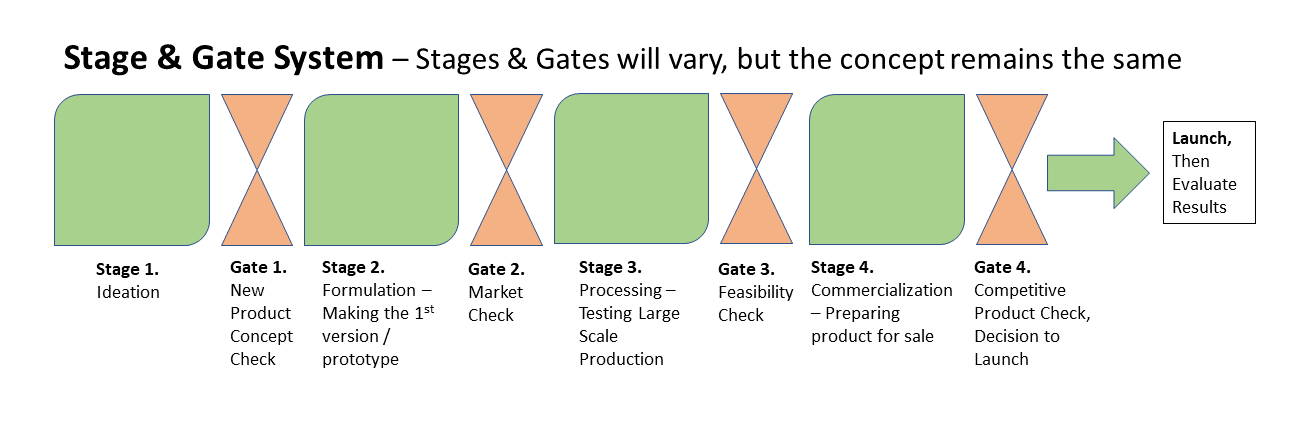
Typically this Stage and Gate process works like a funnel. You may start with 12 to 15 ideas and then research and evaluate those ideas. Some ideas will get discarded because you will find the product concept already exists. Others will get discarded because the ingredients or processing will cost more than what consumers are willing to pay (based on products in the relevant category). Some ideas will seem great, but will be too niche and will not have a large enough target audience to be successful. Once the ideas have been narrowed down, the best 3 to 5 ideas may be moved to the Formulation stage. In this stage, the product will be made on a small scale and consumer testing will be done to confirm interest. Then products will go through the second gate to determine which products have enough consumer interest to continue. During the Processing stage, 2 to 3 products are scaled up on larger equipment. This helps determine production costs and efficiency. Food safety and quality testing also are done to determine how to produce a safe and consistent product. Shelf-life testing is conducted at the end of the Processing stage to make sure the product will remain at an acceptable and safe quality long enough for the product to made, shipped, purchased, and consumed. The third gate evaluates production, food safety, quality, and shelf life to decide which products can actually be made efficiently and consistently. The Commercialization stage includes work to get the product ready to sell on the grocery store shelves. Typically this includes the final costing, additional consumer sensory testing, and package design. The final gate makes sure that no errors or significant drawbacks have been missed before the product is launched. Through the Stage and Gate process, 12 to 15 ideas may get narrowed down to 1 or 2 products. The Stage and Gate process allows many ideas to be considered efficiently. The more viable the idea, the more time and work is needed. When an obstacle is found at a gate, no more time or resources are committed to that idea.
Each company may work through the stages of product development a bit differently depending on resources, timelines, and product types being developed. In a product development course, a product is likely developed from start to finish, so more market, consumer, and product research will need to be done during the ideation stage to catch significant drawbacks.
Often the most difficult part of product development is coming up with the initial idea. Many food products exist in the marketplace, so coming up with a new food product that does not exist and consumers are interested in buying can be a challenge. It is best to simply jump in and start generating ideas. From there, concepts can be refined and narrowed down. Ideas can come from a variety of sources. Some ideas are for a brand-new product and some are for a line extension of an existing product. Once ideas have been generated, it is important to identify the target customer. Trends are followed closely to determine what is new and upcoming. Trends often spark ideas for new products. Trends change over time, so it is difficult to list current examples, but convenience products, comfort foods, and plant-based foods have been trending over the last few years.
Some issues with ideation include regional vs. global preferences and market size vs. target market. Flavors that are commonly known and liked in the Midwest may not sell well in other parts of the country. Consumers outside of the Midwest may not like those flavors or may simply be unfamiliar with the flavors. If your target market is a small part of a product category and the product category itself is small, there may not be a large enough market share for your product. It also can be a challenge to realize that just because you like something, many others may not. We tend to develop products we like, but sometimes you may have to develop a product for a target audience that does not include you.
- Procure ingredients and make them into a product on a small laboratory scale
- Produce a “gold standard” of the new product
- Sourcing ingredients and ingredient costs
- Product shelf life (often not tested in formulation, but needs to be considered early in the process)
- Can the product really be made on a large scale?
- Avoid Patent and Copyright infringement
- The formulated product process is “scaled up” to produce greater volumes
- Pilot plant testing
- Plant testing
- There are always product changes with scale-up.
- Quality & Proximate Analysis testing done to set specifications, determine food safety concerns, and estimate shelf life
- Processing experiments and runs allow a more accurate product cost to be determined (include processing efficiency, rework used, etc.).
Processing Key Questions:
- Sensory Attributes
- Nutritional Profile
- Product Specifications
- Overall Functionality
- Once the new product has been made successfully, it is sent to commercialization to launch the new product into the store for sale.
- determining packaging
- creating a label (logo, nutrition facts, etc.)
- finalizing costs
- developing advertising and/or literature for the product
Commercialization Key Questions:
- How should the product be positioned for the best sales?
- What attributes do you highlight?
- Where does it go in the grocery store (should consider this throughout the development process)?
- What effect will the distribution system have on product quality?
After the launch of a new product:
- Determine if the new product was successful.
- Growing interest, increase in sales
- Market share
- Company sales revenue
Key Team Members
It takes many roles to develop a new food product. A product development team can be very successful with all members contributing an expertise. The challenge is communicating effectively to make sure everyone is on the same page with the status and goals of the project. Key team members include product development, engineering, production, purchasing, quality, regulatory, marketing, sales, and upper management. Their typical roles are laid out below.
Product Developers
- In charge of developing new products, especially in terms of the hands-on testing and managing the development process
- May be the Team Leader
- Formulate Product
- Determine Sensory Attributes
- Run Shelf Life Testing
- Know Food Safety Concerns
- Test the Process
- Consider Nutrition
- Calculate Costs (may need input from others)
Engineering and Production
- Equipment Design and Maintenance
- Process Controls
- Production Costs (line speeds, overhead cost)
- Employee Training
- Consumer Safety
- Consumer Handling
- Ensures consumer expectations are met
- Sensory and Quality attributes are tested to make sure the product meets specifications
- HACCP and Preventative Controls plus Prerequisite Programs
- Microbiology Testing
- Foreign Material Testing
- Process Checks
- Incoming ingredient and packaging safety checks
- Makes sure the new product is legal and safe
- Coordinates a Generally Recognized As Safe (GRAS) dossier if necessary (typically for ingredient development)
- Product Name
- Standard of Identity
- Nutrition Labeling
- Product Codes
Marketing & Sales
- Defines product market and positioning
- Confirms consumer need for a new product through surveys and consumer data
- Develops advertising strategy
- Monitors competitor’s sales and new product introductions
- Helps design product packaging, especially tied to attracting the target audience
- Has input on the product name
Challenges of Product Development
- Just because you think it is a good idea, does not mean everyone else does.
- Sometimes things just do not work like they are supposed to (scale-up changes product characteristics, shelf life is not long enough, low consumer acceptance, etc.)
- Ingredient sourcing and costs
- Processing and equipment limitations
- Area of Expertise
- Goals and Objectives
- Ability to understand other disciplines
- Can be overlap or gaps in functions depending on company structure
Timeline for new product development
- A line extension for an already existing product
- Example: A new flavor of a popular soda
- A new product, but still can be made on existing equipment
- Example: A new type of cereal
- A brand new product – could be hard to make or new equipment may need to be designed/purchased.
- Examples: co-extruded snacks and plant-based meat alternatives
- Developing a new ingredient often takes longer than developing a finished food product because there are more regulatory and sales hurdles involved.
Recap on the Product Development Process
- Product Development is the process of creating, processing, and commercializing a new product.
- New products need to be of interest to a target market.
- The timeline can range from 3 months to 3 years.
- Product development teams are made up of members with a variety of backgrounds.
Product Development Scope
It is important to be able to ideate openly & creatively. However, ask yourself, “Does the product already exist?” and “What are our company’s new idea limitations?”. Below are common limitations for product development courses:
- Avoid mixes, line extensions, and assembly products.
- Avoid expensive ingredients or be ready to discuss how to pay for them.
- Typically a course does not have an alcohol license.
- CBD oil is not yet legal in food items in some states.
- Processing equipment availability needs to be considered for your new product idea.
Food Product Development Lab Manual Copyright © 2021 by Kate Gilbert and Ken Prusa is licensed under a Creative Commons Attribution-NonCommercial-ShareAlike 4.0 International License , except where otherwise noted.
- Share this article
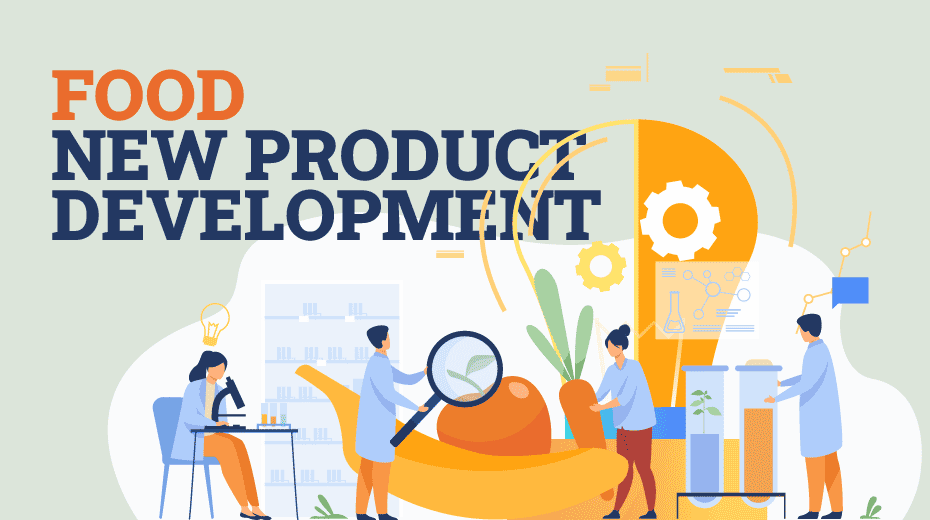
- Posted in in Technology
Food Product Development Process: Steps & Flowchart
- Posted by by Pranav Ghule
- March 14, 2021
Table of Contents
Food product development in food technology (processing) industries is a continuous and never stopping process. Have you observed different Flavours in the chips? Like Tomato, Cheese n Cream, Magic masala, Sour cream & Onion etc. Or take an example of Vegan Milk ( Plant-based milk ) made from entirely plant-based ingredients.
All this we can say is a result of the food product development process. Like developing different flavours in an already present product. Then, entirely developing a new product which is not present in this world before.
Sounds interesting? So, we will look into the Food product development process, including New product development.
What is New food product development (NPD)?
New product development is the process of developing new products by any food company, to begin to need to create a new product because of changing in new food technologies or the introduction of the competitive product in the market.
A food company can process a new product development, whether that food company is a part of changing the market or not — the new product based on the already existing one and act as a complement or improvement in existing products. Or may new products based on the latest technologies without a need of suffered from others.
There are several types of classification for the new product.
Classification of new food product development
New product development is classified in four categories :
1. Major innovation
Significant innovations are new in the market—the Food products created with the latest technologies, ingredients and provide a unique experience to the customers.
For example- Beyond meat developed, completely plant based-meat products which are free from any animal best ingredients.
Read More about Beyond meat: The Beyond Meat story – Vegan Alternative to meat
2. Product improvements
In this classification, the food products developed without considering creating a new market. But, Instead targets customers from competitors.
For example- In food products such as fat-free allergen-free products, which are already in the market and compete with competitors.
3. Product additions
In this classification, the food products developed by food companies known as imitation products. In fact, The food producers create products from available resources to develop the original product. which already produced by the original producer of that food product.
For example- the local snacks processing industry produces snacks products (chips, namkeen), imitating large companies in the snacks market.
4. Repositioned products
Repositioned products are promoted in a new way, such as attracting different kinds of customers. These are not new products, formulations nor having any new features, but they positioned in the other way to attract different groups of customers.
For example, – The Lucozade energy drink business changed the product’s image from a drink to recover people from an illness to a drink for people interested in sports. [Source: Superbrands case studies: Lucozade ]
After understanding the new food product development classifications, let’s look at the food product development process.
Food product development process : 8 steps
The food product development process consists of following 8 steps:
- Idea generation
- Evaluation & Screening
- Market research
- Product specification
- Feasibility study
- Production process development
- Prototype development & testing
- Launch & Commercialization
However, We will look into this food product development process, from starting to finalising and commercialisation one by one in detail.

1. Idea generation
Two product development process start with an idea. This idea can come from any place or any source. Typically a company generate hundreds of Idea by brainstorming. Still, a handful of good ideas come to an end, and there are two sources of Idea generation from where we get an idea.
- Internal source- the company finds new ideas interior utilising research and development and also, from the contribution from its employees.
- External source – new ideas from external sources such as distributors, suppliers and competitors. But the most important external sources are customers because the new development process should focus on creating customer value.
2. Evaluation and Idea screening
The next step in NPD is idea screening. However, Idea screening means filtering the ideas to pick a good one. In Idea generation, we find different ideas, and in this stage, we screen to choose a good one. The reason is that product development cost rice greatly in later stages; therefore, the company e would like to go ahead only with the ideas that will turn into profitable products dropping the flawed ideas.
3. Market research
In this research, the company will know about consumer preferences and also the acceptance of products. all the primary and secondary markets study used to collect data.
- Primary research – is a method of taking surveys and getting original data.
- Secondary research- analysing the data gathered in the primary survey investigating what found in the primary study.
Taking a survey to ask consumers what they want, what they need and whether they will accept the product. Also, The survey conducted to gather data & analyse, focusing on groups, gender, age, economic status, & geographical location, the research conducted to collect data.
Market research concludes that the products survive in the market or not. The company can decide whether to continue or discontinue the product.
4. Product Specification
The product specification method is a lengthy and complicated process. The process includes a description of a new product’s characteristics, including product description (forms and style), features and attributes such as flavour, texture, nutritional value, packaging, shelf life , raw materials, and supplier& Target market.
Further, Consumer benefit includes nutrition, cost, convenience, quality.
Pricing strategy- Pricing strategy includes selling the product price depending on the cost of competitive products, target market, and the ability to pay, company image, and product benefits.
5. Feasibility study of food product
The feasibility study conducted to check the viability of new products. In addition, The product should be technically and financially feasible. Determine whether the sales forecast’s production cost will achieve its break-even point and ability to make the new product using existing resources—availability of ingredients, new processes, cost of ingredients, microbiological safety test.
6. Production process development
A new product can be unique and different from the existing line or a simple line extension. So, according to that, the process is to developed. Involves converting factory to accommodate new product; line extension products only need minor changes. If the product is new, equipment and factory layout need to alter, involving raw materials, tasks, equipment, processing, quality management, packaging, labelling, and storage.
7. Food product Prototype development and testing
Prototype development is necessary to get an idea about large scale processes. Large scale production helps to manage production and storage.
Prototype testing- Testing of a new product carried to see if it satisfies food standards. After the prototype undergoes testing, commercialisation (full-scale production and manufacturing) take place.
Quality testing -checks the effectiveness of quality management parameters and hygiene standards.
Sensory evaluation test market of field based on texture flavour colour and Aroma.
Packaging test – Test conducted to determine effectiveness handling storage durability e interaction effect of packaging. Storage trials to stimulate distribution retail in-home storage condition safety and quality after storage and establish shelf life.
8. Launch & Commercialization
Finally, the launching of the product in the market. Commercialization of developed product into the market and doing its marketing and advertisement is the next process. However, to check whether the launched product making enough sales and generating profits is required.
Conclusion- Food Product Development
In conclusion to our new food product development process. And we can say that this NPD process is lengthy. But Every food manufacturer has to follow this process to grow, sustain and compete in the market.
However, This product development process may vary from manufacturer to manufacturer according to their products, services, market and area of study.
What do you guys think about this process? If you liked this article then comment below your thoughts. If you have any suggestion or feedback please comment below.
Post navigation
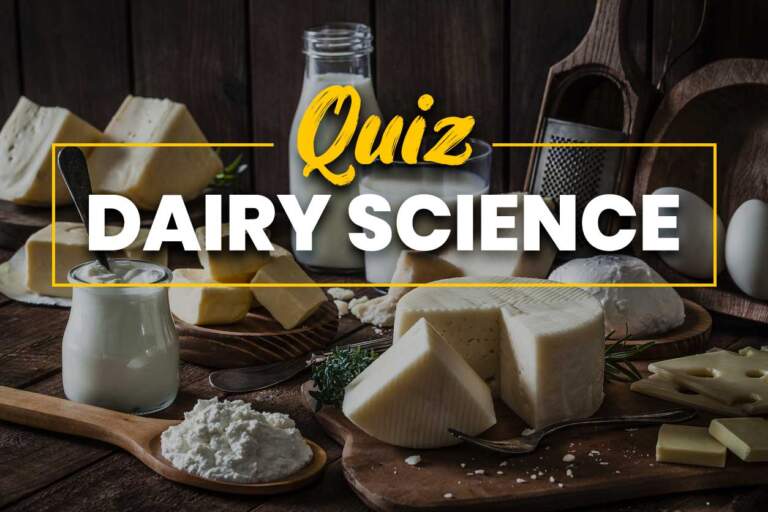
- Posted in in Quiz
Basic Dairy science quiz: Ready to check your knowledge?
- March 8, 2021
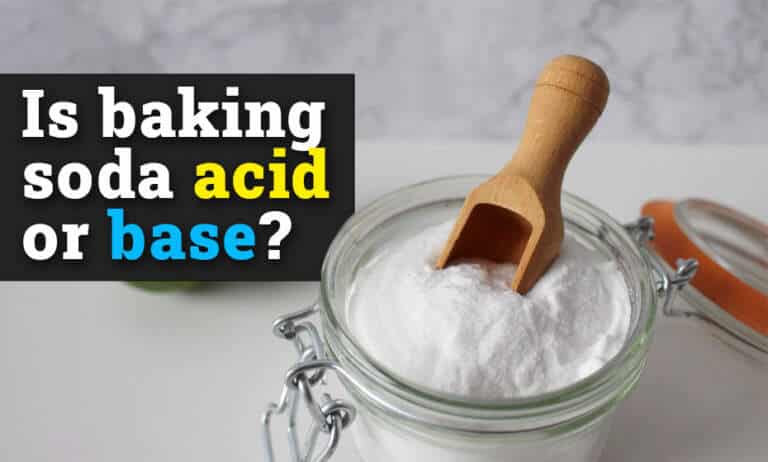
- Posted in in Basics
Is Baking Soda Acid or Base? Understanding the Chemistry
- March 16, 2021
Leave a Comment
Leave a reply cancel reply.
Your email address will not be published. Required fields are marked *
Save my name, email, and website in this browser for the next time I comment.
You might also like
Stay a while and read more posts like this
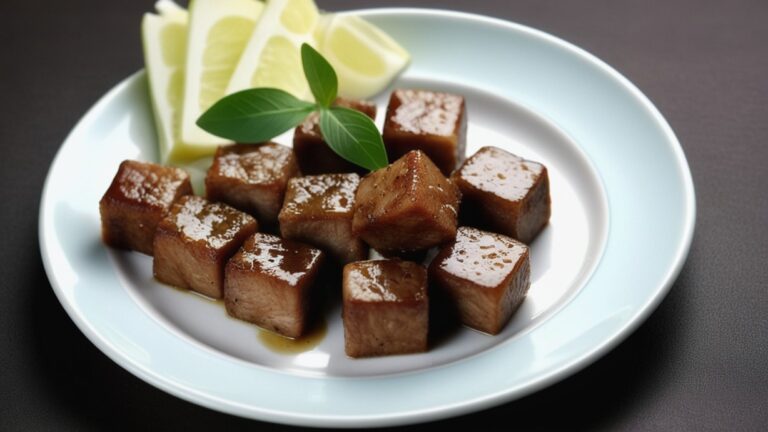
Discover the Magic: How Plant-Based Meat is Made
- Posted by by Editorial Staff
- January 7, 2024
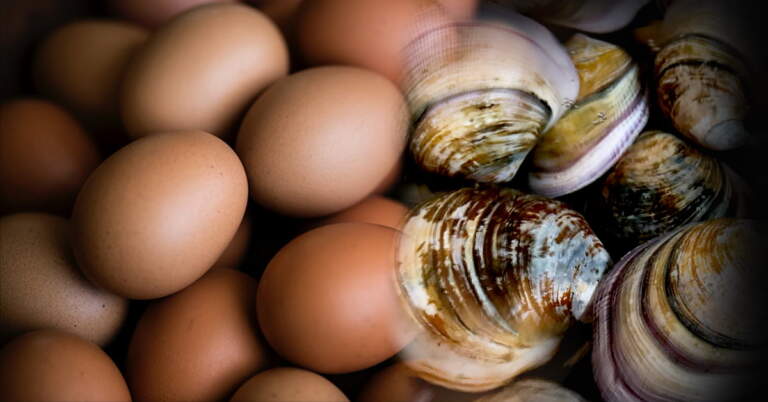
Pasteurization: For Eggs and Shellfish Preservation
- Posted by by Ananya Manda
- August 12, 2020
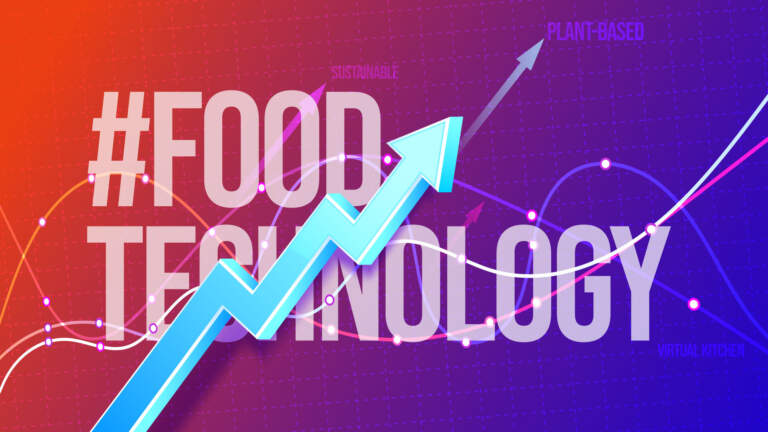
Top 6 Food Technology Trends to Watch in 2021
- January 21, 2021
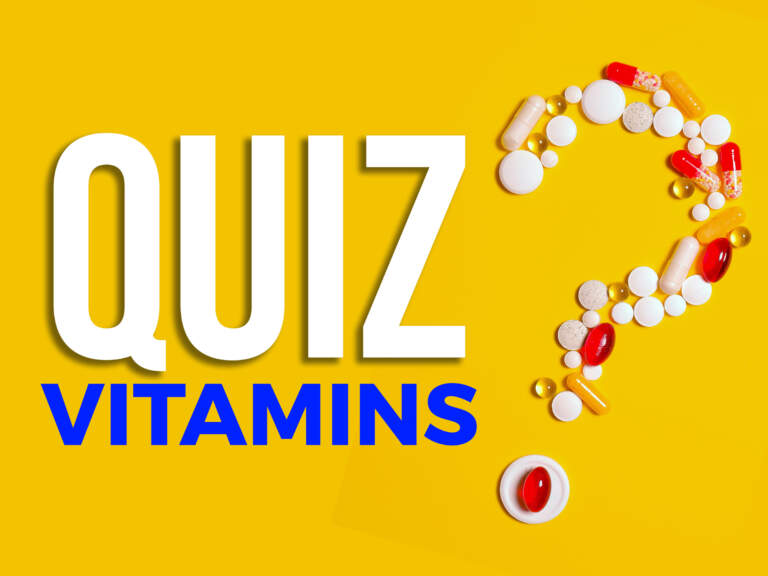
How much you know about Vitamins? Take this quiz
- March 28, 2021

- Posted in in Jobs
Vacancy in IFF for Food Technologist I – SPO
- April 11, 2021
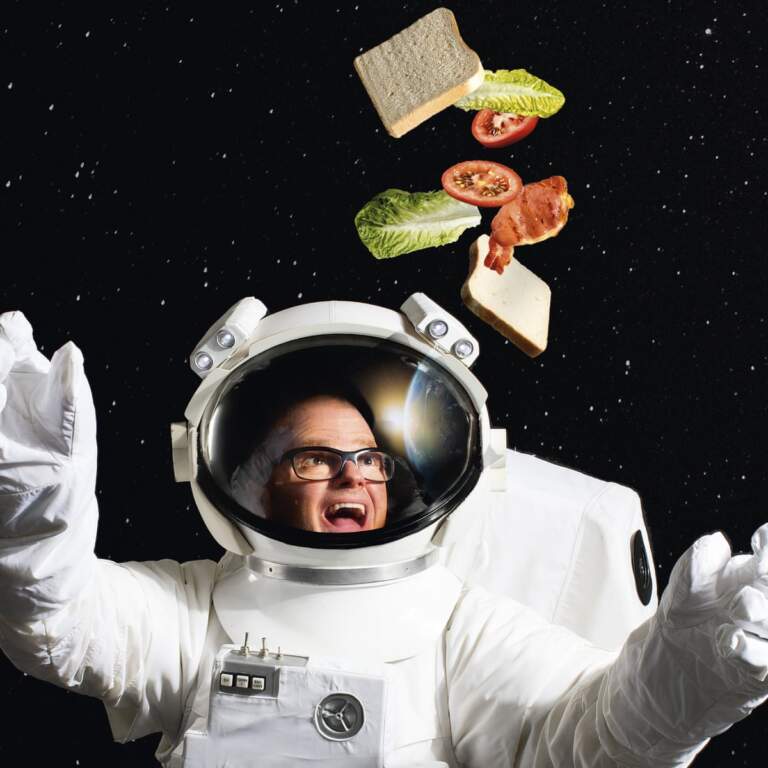
What food do astronauts eat in space? Learn about space food
- October 6, 2020
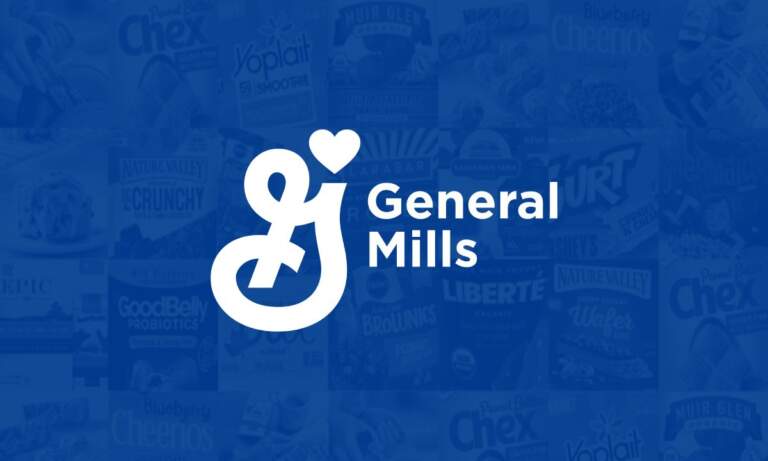
Vacancy for Production Executive – India Foods (General mills)
- April 10, 2021
Subscribe to our newsletter

- My presentations
Auth with social network:
Download presentation
We think you have liked this presentation. If you wish to download it, please recommend it to your friends in any social system. Share buttons are a little bit lower. Thank you!
Presentation is loading. Please wait.
To view this video please enable JavaScript, and consider upgrading to a web browser that supports HTML5 video
Food Product Development
Published by Oscar Fleming Modified over 6 years ago
Similar presentations
Presentation on theme: "Food Product Development"— Presentation transcript:

© 2010 Innovation and Business Industry Skills Council Ltd. BSBMKG506B Plan market research Session 3 Define data gathering approaches.

Stages of Product Development

Starting a Business Conducting Start-up Market Research METHODS OF PRIMARY AND SECONDARY MARKET RESEARCH QUALITATIVE AND QUANTITATIVE RESEARCH SIZE AND.

Marketing Research.

[9.4] Market Research Essential idea: Market research is any organized effort to gather information about markets or customers.

IDENTIFY AND MEET A MARKET NEED

4.04 Understand marketing- research activities to show command of their nature and scope.

Research Methodology.

By: Chinwoo CHAPTER 25: MARKETING PLANNING. Marketing planning: The process of making appropriate strategies and preparing marketing activities to meet.

Level 1 Business Studies AS90837 Demonstrate an understanding of internal factors of a small business.

Insert Chapter Title Screen. Understand how marketing research can contribute to a firm’s competitive advantage. Understand that market research includes.

Types of product development. Line extensions As consumers demands grow for a certain product, the manufacturing companies need to expand their sales.

4. Marketing research After carefully studying this chapter, you should be able to: Define marketing research; Identify and explain the major forms of.

The goal of a market analysis is to determine the attractiveness of a market and to understand its evolving opportunities and threats as they related.

Market Analysis and Target Market

Business Management March 2, 2017, Marketing.

Quantitative Methods for Business Studies

How would this information be useful to a business?

MARKETING RESEARCH.
About project
© 2024 SlidePlayer.com Inc. All rights reserved.
Please log in to save materials. Log in
- Resource Library
- Food Products & Processing
Education Standards
Nebraska agriculture and natural resources standards.
Learning Domain: Food Products and Processing systems
Standard: Design a new food product.
Food Product Development
Ideas unlimited food product development.

Students will develop a food product, as well as prepare and present about various aspects of the product, its marketing, and logistics. Written by Abby Knobbe
Food Product Development Lesson Plan
Interest Approach
Share the following information with students to demonstrate real-world marketing considerations for popular and common snack foods. Include a taste test of the products if possible! Encourage them to discuss what they see, ask questions, and wonder about the design behind other foods they buy.
Customer Segmentation table 11.3 from Introduction to Business (CC-BY Creative Commons License v4.0)
Table 11.3 Source: Adapted from Frito Lay website, accessed October 1, 2017.
Content/Procedure/Activity
Instructions for food product development and presentation included in attachment.
Closure/Check for Understanding
Rubric for presentation included in attachment.
Students will develop a food product, as well as prepare and present about various aspects of the product, its marketing, and logistics. Developed from activity by Abby Knobbe
Essential Question
What influences decisions in the development of a new food product, from its name and ingredients to its packaging and advertising strategy?
Students will develop a comprehensive food product development plan that covers all essential elements, including the product's name, ingredients, preparation process, storage, target market, packaging, pricing, advertising, sales channels, shipping requirements, and competition analysis.
Students will conduct a thorough analysis of the competition for similar food products, demonstrating a deep understanding of the current market landscape. The objective is to identify key competitors, analyze their strengths and weaknesses, and formulate strategies to differentiate the proposed product effectively.
Students will infuse creativity into their presentation by incorporating innovative ideas, visuals, and an engaging presentation style. This objective emphasizes the creative aspect of the development plan, encouraging students to present their ideas in a compelling and visually appealing manner to capture the audience's attention.
Image Credit
Photo by davisuko on Unsplash
AFNR.HS.13.5.b Analyze strategies to create food products meeting and developing consumer trends.

Food Product Development Process
Brainstorm product concept, conduct market research.
- 2 Focus groups
- 3 Online research
- 4 Industry reports
- 5 Competitor analysis
- 1 Interviews
- 2 Online surveys
- 3 Observations
- 4 Secondary data analysis
- 5 Field tests
Create product formulation or recipe
Source raw materials.
- 3 International
Prepare prototype product
Conduct consumer testing.
- 1 Random sampling
- 2 Online sign-ups
- 3 In-store recruitment
- 4 Targeted audience recruitment
- 5 Focus group participants
- 3 Appearance
- 4 Overall liking
- 5 Purchase intent
Approval: Consumer Testing Results
- Conduct consumer testing Will be submitted

Adjust product formulation or recipe based on feedback
Develop packaging design.
- 5 Biodegradable
Conduct shelf life testing
- 1 Microbiological testing
- 2 Sensory evaluation
- 3 Chemical analysis
- 4 Accelerated aging tests
- 5 Challenge testing
Approval: Shelf Life Results
- Conduct shelf life testing Will be submitted
Prepare production cost estimation
Approval: production cost estimation.
- Prepare production cost estimation Will be submitted
Final approval of product formulation, recipe, packaging and costing
Production trial run, adjusting production process based on trial run results.
- 1 Workflow optimization
- 2 Equipment calibration
- 3 Personnel training
- 4 Ingredient sourcing
- 5 Quality control measures
Final product production
Quality control testing.
- 4 Physical analysis
- 5 Quality attribute assessment
Approval: Quality Testing Results
- Quality control testing Will be submitted
Market the product
Take control of your workflows today., more templates like this.
- Skip to content
- Skip to search
- Staff portal (Inside the department)
- Student portal
- Key links for students
Other users
- Forgot password
Notifications
{{item.title}}, my essentials, ask for help, contact edconnect, directory a to z, how to guides, food technology 7-10 – food product development.
In this unit students examine a range of food product developments, the reasons for food product development and their effect on society.
Students investigate a range of emerging technologies in the food industry and outline the steps in food product development whilst designing their own food product.
Additional resources to support the teaching and learning of this unit:
- Food product development program (DOCX 89 KB)
- Food product development teacher workbook (DOCX 333 KB)
- Food product development student workbook (DOCX 324 KB)
- Food product development presentation 1 (PPTX 140 KB)
- Food product development presentation 2 (PPTX 412 KB)
- Food product development presentation 3 (PPTX 302 KB)
Please note:
Syllabus outcomes and content descriptors from Food Technology 7–10 Syllabus © NSW Education Standards Authority (NESA) for and on behalf of the Crown in right of the State of New South Wales, 2019.
Related content
Tas 7-10 curriculum resources.
Resources to help lead curriculum implementation across TAS learning areas.
Keep up to date
Curriculum updates, news and where to find further information.

- school Campus Bookshelves
- menu_book Bookshelves
- perm_media Learning Objects
- login Login
- how_to_reg Request Instructor Account
- hub Instructor Commons
- Download Page (PDF)
- Download Full Book (PDF)
- Periodic Table
- Physics Constants
- Scientific Calculator
- Reference & Cite
- Tools expand_more
- Readability
selected template will load here
This action is not available.

1.1: Introduction to Food Product Development
- Last updated
- Save as PDF
- Page ID 17800

- Kate Gilbert & Ken Prusa
- Iowa State University via Iowa State University Digital Press
To start, let’s think about what product development is:
- How new things show up in the grocery store or in foodservice
- The process of creating, processing, and commercializing a new food product
- The process generally takes a group of people from different disciplines working together to develop (or improve) a product.
Product Development Key Stages
Formulation, commercialization.
At each stage, or even within the stages, there are checkpoints to decide to continue or stop the project. This can be done through a Stage and Gate System like the example shown here or it can be done in a modified system. The principle is the same, though, to develop new products strategically and use time and resources wisely.
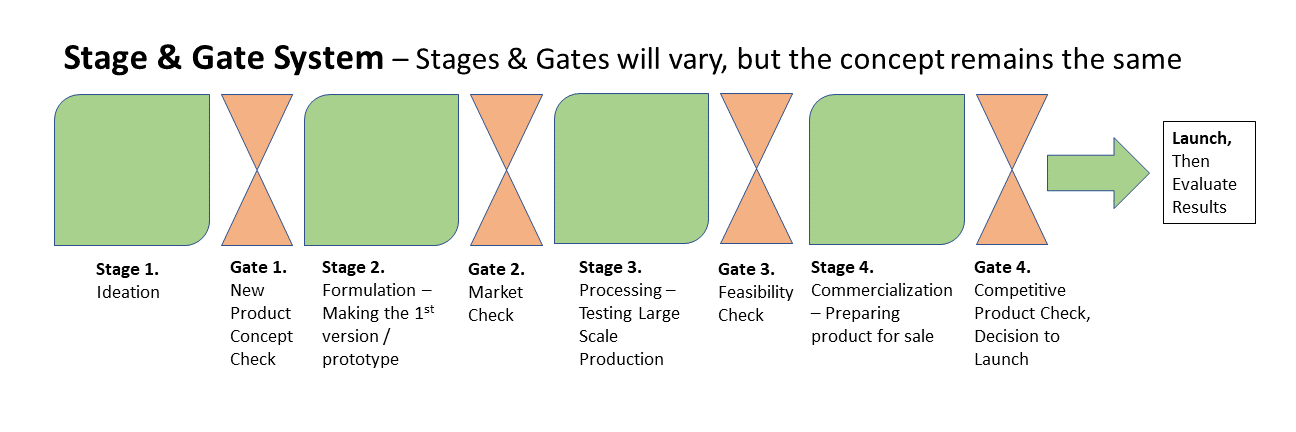
Typically this Stage and Gate process works like a funnel. You may start with 12 to 15 ideas and then research and evaluate those ideas. Some ideas will get discarded because you will find the product concept already exists. Others will get discarded because the ingredients or processing will cost more than what consumers are willing to pay (based on products in the relevant category). Some ideas will seem great, but will be too niche and will not have a large enough target audience to be successful. Once the ideas have been narrowed down, the best 3 to 5 ideas may be moved to the Formulation stage. In this stage, the product will be made on a small scale and consumer testing will be done to confirm interest. Then products will go through the second gate to determine which products have enough consumer interest to continue. During the Processing stage, 2 to 3 products are scaled up on larger equipment. This helps determine production costs and efficiency. Food safety and quality testing also are done to determine how to produce a safe and consistent product. Shelf-life testing is conducted at the end of the Processing stage to make sure the product will remain at an acceptable and safe quality long enough for the product to made, shipped, purchased, and consumed. The third gate evaluates production, food safety, quality, and shelf life to decide which products can actually be made efficiently and consistently. The Commercialization stage includes work to get the product ready to sell on the grocery store shelves. Typically this includes the final costing, additional consumer sensory testing, and package design. The final gate makes sure that no errors or significant drawbacks have been missed before the product is launched. Through the Stage and Gate process, 12 to 15 ideas may get narrowed down to 1 or 2 products. The Stage and Gate process allows many ideas to be considered efficiently. The more viable the idea, the more time and work is needed. When an obstacle is found at a gate, no more time or resources are committed to that idea.
Each company may work through the stages of product development a bit differently depending on resources, timelines, and product types being developed. In a product development course, a product is likely developed from start to finish, so more market, consumer, and product research will need to be done during the ideation stage to catch significant drawbacks.
Often the most difficult part of product development is coming up with the initial idea. Many food products exist in the marketplace, so coming up with a new food product that does not exist and consumers are interested in buying can be a challenge. It is best to simply jump in and start generating ideas. From there, concepts can be refined and narrowed down. Ideas can come from a variety of sources. Some ideas are for a brand-new product and some are for a line extension of an existing product. Once ideas have been generated, it is important to identify the target customer. Trends are followed closely to determine what is new and upcoming. Trends often spark ideas for new products. Trends change over time, so it is difficult to list current examples, but convenience products, comfort foods, and plant-based foods have been trending over the last few years.
Some issues with ideation include regional vs. global preferences and market size vs. target market. Flavors that are commonly known and liked in the Midwest may not sell well in other parts of the country. Consumers outside of the Midwest may not like those flavors or may simply be unfamiliar with the flavors. If your target market is a small part of a product category and the product category itself is small, there may not be a large enough market share for your product. It also can be a challenge to realize that just because you like something, many others may not. We tend to develop products we like, but sometimes you may have to develop a product for a target audience that does not include you.
- Procure ingredients and make them into a product on a small laboratory scale
- Produce a “gold standard” of the new product
- Sourcing ingredients and ingredient costs
- Product shelf life (often not tested in formulation, but needs to be considered early in the process)
- Can the product really be made on a large scale?
- Avoid Patent and Copyright infringement
- The formulated product process is “scaled up” to produce greater volumes
- Pilot plant testing
- Plant testing
- There are always product changes with scale-up.
- Quality & Proximate Analysis testing done to set specifications, determine food safety concerns, and estimate shelf life
- Processing experiments and runs allow a more accurate product cost to be determined (include processing efficiency, rework used, etc.).
Processing Key Questions:
- Sensory Attributes
- Nutritional Profile
- Product Specifications
- Overall Functionality
- Once the new product has been made successfully, it is sent to commercialization to launch the new product into the store for sale.
- determining packaging
- creating a label (logo, nutrition facts, etc.)
- finalizing costs
- developing advertising and/or literature for the product
Commercialization Key Questions:
- How should the product be positioned for the best sales?
- What attributes do you highlight?
- Where does it go in the grocery store (should consider this throughout the development process)?
- What effect will the distribution system have on product quality?
After the launch of a new product:
- Determine if the new product was successful.
- Growing interest, increase in sales
- Market share
- Company sales revenue
Key Team Members
It takes many roles to develop a new food product. A product development team can be very successful with all members contributing an expertise. The challenge is communicating effectively to make sure everyone is on the same page with the status and goals of the project. Key team members include product development, engineering, production, purchasing, quality, regulatory, marketing, sales, and upper management. Their typical roles are laid out below.
Product Developers
- In charge of developing new products, especially in terms of the hands-on testing and managing the development process
- May be the Team Leader
- Formulate Product
- Determine Sensory Attributes
- Run Shelf Life Testing
- Know Food Safety Concerns
- Test the Process
- Consider Nutrition
- Calculate Costs (may need input from others)
Engineering and Production
- Equipment Design and Maintenance
- Process Controls
- Production Costs (line speeds, overhead cost)
- Employee Training
- Consumer Safety
- Consumer Handling
- Ensures consumer expectations are met
- Sensory and Quality attributes are tested to make sure the product meets specifications
- HACCP and Preventative Controls plus Prerequisite Programs
- Microbiology Testing
- Foreign Material Testing
- Process Checks
- Incoming ingredient and packaging safety checks
- Makes sure the new product is legal and safe
- Coordinates a Generally Recognized As Safe (GRAS) dossier if necessary (typically for ingredient development)
- Product Name
- Standard of Identity
- Nutrition Labeling
- Product Codes
Marketing & Sales
- Defines product market and positioning
- Confirms consumer need for a new product through surveys and consumer data
- Develops advertising strategy
- Monitors competitor’s sales and new product introductions
- Helps design product packaging, especially tied to attracting the target audience
- Has input on the product name
Challenges of Product Development
- Just because you think it is a good idea, does not mean everyone else does.
- Sometimes things just do not work like they are supposed to (scale-up changes product characteristics, shelf life is not long enough, low consumer acceptance, etc.)
- Ingredient sourcing and costs
- Processing and equipment limitations
- Area of Expertise
- Goals and Objectives
- Ability to understand other disciplines
- Can be overlap or gaps in functions depending on company structure
Timeline for new product development
- A line extension for an already existing product
- Example: A new flavor of a popular soda
- A new product, but still can be made on existing equipment
- Example: A new type of cereal
- A brand new product – could be hard to make or new equipment may need to be designed/purchased.
- Examples: co-extruded snacks and plant-based meat alternatives
- Developing a new ingredient often takes longer than developing a finished food product because there are more regulatory and sales hurdles involved.
Recap on the Product Development Process
- Product Development is the process of creating, processing, and commercializing a new product.
- New products need to be of interest to a target market.
- The timeline can range from 3 months to 3 years.
- Product development teams are made up of members with a variety of backgrounds.
Product Development Scope
It is important to be able to ideate openly & creatively. However, ask yourself, “Does the product already exist?” and “What are our company’s new idea limitations?”. Below are common limitations for product development courses:
- Avoid mixes, line extensions, and assembly products.
- Avoid expensive ingredients or be ready to discuss how to pay for them.
- Typically a course does not have an alcohol license.
- CBD oil is not yet legal in food items in some states.
- Processing equipment availability needs to be considered for your new product idea.

Powerpoint Templates
Icon Bundle
Kpi Dashboard
Professional
Business Plans
Swot Analysis
Gantt Chart
Business Proposal
Marketing Plan
Project Management
Business Case
Business Model
Cyber Security
Business PPT
Digital Marketing
Digital Transformation
Human Resources
Product Management
Artificial Intelligence
Company Profile
Acknowledgement PPT
PPT Presentation
Reports Brochures
One Page Pitch
Interview PPT
All Categories

New Food Product Development And Launch Timeline
This slide displays a Gantt chart for new product development and release. It also includes stages of production and launch such as business plan, food product niche selection, legal requirements, labelling requirements, etc.

- Add a user to your subscription for free
You must be logged in to download this presentation.
Do you want to remove this product from your favourites?
PowerPoint presentation slides
This slide displays a Gantt chart for new product development and release. It also includes stages of production and launch such as business plan, food product niche selection, legal requirements, labelling requirements, etc. Introducing our premium set of slides with New Food Product Development And Launch Timeline. Ellicudate the one stage and present information using this PPT slide. This is a completely adaptable PowerPoint template design that can be used to interpret topics like Product Niche Selection, Legal Requirements, Labelling Requirements. So download instantly and tailor it with your information.

People who downloaded this PowerPoint presentation also viewed the following :
- Diagrams , Business , Strategy , Icons , Business Slides , Timelines Roadmaps , Flat Designs , Roadmaps and Timelines
- Product Niche Selection ,
- Legal Requirements ,
- Labelling Requirements
New Food Product Development And Launch Timeline with all 6 slides:
Use our New Food Product Development And Launch Timeline to effectively help you save your valuable time. They are readymade to fit into any presentation structure.
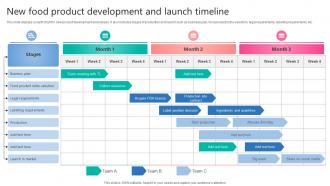
Ratings and Reviews
by Michael Clark
March 30, 2023
by Donte Duncan
March 29, 2023

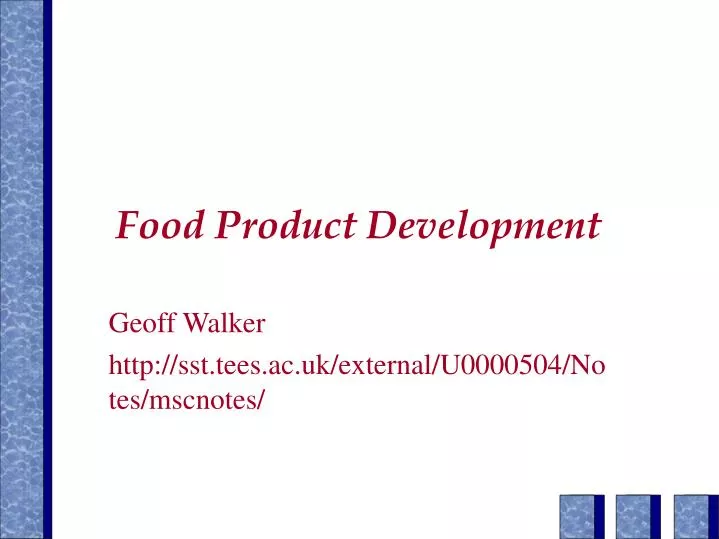
Food Product Development
Nov 20, 2014
2.73k likes | 7.92k Views
Food Product Development. Geoff Walker http://sst.tees.ac.uk/external/U0000504/Notes/mscnotes/. New Product Development. Why NPD? Types of NPD The NPD cycle. The need for new product development. Product Life Cycles Remain competitive Consumer/Customer Needs New Technology
Share Presentation
Product development.
- development cycle
- strategic management
- product development strategy
- sensory consumer acceptance testing

Presentation Transcript
Food Product Development Geoff Walker http://sst.tees.ac.uk/external/U0000504/Notes/mscnotes/
New Product Development • Why NPD? • Types of NPD • The NPD cycle
The need for new product development • Product Life Cycles • Remain competitive • Consumer/Customer Needs • New Technology • Government Regulation
Product development • Essential to the survival of a company • Thousands of “new” food products are launched every year • Most new products are “line extensions” • Only a few hundred will survive for a year
Product development adds value in several ways PRODUCT DEVELOPMENT GROWTH PRODUCTIVITY QUALTITY BRAND IMPROVEMENT MAINTENANCE • Conformance • Special Situations • Regulatory • Environmental • Specifications • Quality of Design • Competitive Advantage • Reduce Cost • Formulas • Packages • Manufacturing Procedures • Line Extensions • New Products • New Packages
Product Development • Complex - generally market driven • Requires the integration of marketing, R&D, processing and legal functions of a company • Success only comes with careful planning and execution • Teamwork absolutely essential
Company Mission Company Objective Company Strategy Company Plans Why Do We Exist? Where We Want to Go? How Will We Get There? What Do We Do Now? To avoid chaos, a hierarchy must exist to guide product development • Programmes • Product Development • Projects Tasks
To ensure success, you need good strategic management and good product development execution STRATEGIC MANAGEMENT PRODUCT DEVELOPMENT EXECUTION SDG 8/18/95
Companies Need to Address Strategic Planning on Several Levels Mission Objectives Identity Mission Objectives Company Strategy Business Units PRODUCT STRATEGY Business Strategy • Technical Competencies • Strategic Principles • Organization • Alliances Categories PRODUCT PORTFOLIO STRATEGY Portfolio Strategy Brands • Project Mix • Milestones • Resource Levels PRODUCT DEVELOPMENT STRATEGY Project Strategy • Resource Allocations • Technical Approaches • Timing • Deliverables Projects
Product Development Cycle • The idea • Technical and commercial feasibility • Product formulation and testing • Costing • Production requirements • Commercial launch
The idea • Ideas generation • brainstorming, • focus groups • the MD wants it, • Types of new product • uniquely innovative, • Line extensions, • repositioned products.
Technical & Commercial feasibility • Commercial feasibility • What is the market? • Regional/national preferences. • Market size vs. consumer preference • Personal likes/dislikes • New trends • Technical feasibility • Can we produce the product? • Will it need significant investment? • How does it compare with existing products?
Product formulation and testing • Recipe development • Sensory & consumer acceptance testing • Product specification • Pricing & preliminary costing • Nutritional value
Production requirements • Process flow, • Equipment types, • Risk assessment, • Shelf life, • Product quality, • Packaging, storage & distribution
Costing • Fixed costs • Variable costs • Break even point • Profitability
Commercial launch • How and where to launch? • Local acceptability trials • publicity & advertising
What can go wrong? • New products can fail at every stage of the development cycle • Inadequate consumer research • Lack of management support • Poor communications • Inadequate documentation • Inadequate training • Technical reasons • Legal reasons • Insufficient financial return • Costs too high • Price too low
Critical success factors • The success or otherwise of a new product can be due to a number of factors, but ultimately it comes down to • PEOPLE • and their understanding of all aspects of the product , process and package requirements • Product failure can occur at any step in the development and final product stage • Communications and vigilance and management support are key factors in ensuring success
Acknowledgement A number of slides in the presentation have been based on material produced by Prof W. James Harper of Ohio State University.
- More by User
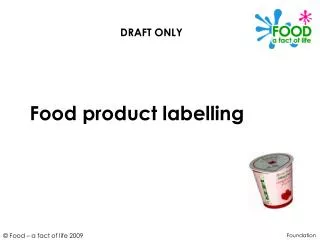
Food product labelling
DRAFT ONLY. Food product labelling. Foundation. Learning objectives. To recognise which information, by law, must appear on food products. To recognise the additional information which some food manufactures choose to place on food labels.
1.29k views • 37 slides

Food Product Flow
Food Product Flow. OverviewFoodservice operators have a plethora of choices when considering how they organize the product flow. There are four systems presented. Foodservice operators use a combination of these systems to manage labor, food cost, and food quality.GoalTo identify the foodservice
448 views • 10 slides

Synchronized Food Product Development
Real Projects. Real Learning. Real Impact…. Real Sponsors. Real Opportunity. Synchronized Food Product Development. Art Hill Melanie Lang Massimo Marcone. Value-Added Learning. Importance of co-curricular learning; value-added with engagement
234 views • 11 slides
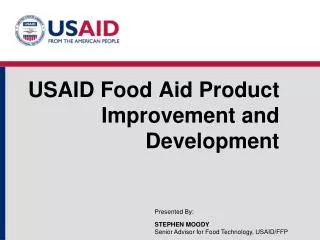
USAID Food Aid Product Improvement and Development
USAID Food Aid Product Improvement and Development. Presented By:. STEPHEN MOODY Senior Advisor for Food Technology, USAID/FFP. Ready-to-Use Foods. Emergency Food Products. General Food Basket Products. Fortified Blended Foods. Intended Purpose of Fortified Blended Foods.
319 views • 9 slides
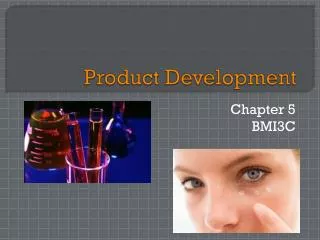
Product Development
Product Development. Chapter 5 BMI3C. Day 1 – R esponse Journal . In your opinion, what was the most important product ever invented? Why? *** Save As April 22 in your Response Journal folder ***. Marketing & Product Development. Market Research.
819 views • 61 slides

“ Product Development”
Unit 3. “ Product Development”. What is a Product? Consumer Markets Product Design Process Product Planning Product Mix. Product. A good, service, or idea sold to satisfy wants/needs Can be simple or complex
524 views • 18 slides

PRODUCT DEVELOPMENT
PRODUCT DEVELOPMENT. 11.Lesson Packaging Rünno Lumiste. PACKAGING AS SOURCE OF BUSINESS OPPORTUNITIES. Package for yourself Products Machines and devices Materials Methods FUNCTION OF PACKAGE to contain to inform to advertise. page 5.
482 views • 32 slides

Product Development. Marketing Mix, SWOT Analysis and Stages of Developing an Idea. Margarita Antonova. Volunteer Trainer @ Telerik Academy. academy.telerik.com. Business System Analyst. Telerik Corporation. IT. Developers. Business. Product. Table of Contents.
459 views • 28 slides

Product Development. Types of New Product Introductions. High. New-to-world products 10%. New product lines 20%. Additions to existing product lines 26%. Improvements to existing products 26%. Newness to company. Repositionings 7%. Cost reductions 11%. Low. High.
849 views • 40 slides

PRODUCT DEVELOPMENT. INTRODUCTION.
282 views • 15 slides
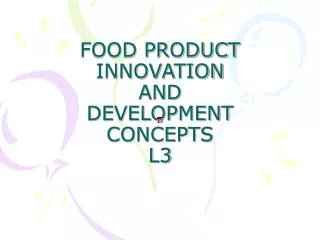
FOOD PRODUCT INNOVATION AND DEVELOPMENT CONCEPTS L3
FOOD PRODUCT INNOVATION AND DEVELOPMENT CONCEPTS L3. Learning objectives. What product development or innovation is Purpose of developing new products Basic development, formulation or design models. What is product development. Develop or design original or new products
1.27k views • 17 slides
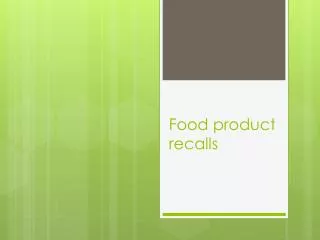
Food product recalls
Food product recalls. Definition of a food recall. FSANZ defines a Food Product recall as action taken to remove from distribution, sale and consumption, food that may pose a health and safety risk to consumers. . Who needs to be ready for food recalls?.
435 views • 12 slides

Food product recalls. Definition of a food recall. FSANZ defines a Food Product recall as action taken to remove from distribution, sale and consumption, food that may pose a health and safety risk to consumers. . Why might a food recall be necessary?. Foods have been incorrectly labelled .
1.02k views • 10 slides

Product Development. Team 1. Locations considered. Hospitals Locations usually require sterile or very clean instruments Lots of movement/people moving in and out of a room (waiting room, surgery, examination room, bathrooms, etc.)
225 views • 10 slides
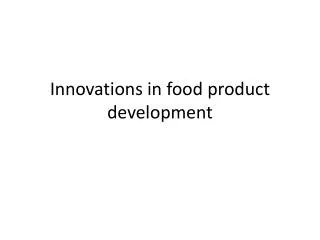
Innovations in food product development
Innovations in food product development. Genetic modification. The process of altering genetic material of plants or animals by duplicating, removing or inserting one or more genes to improve it’s characteristics. How does GM work?
525 views • 24 slides

PDMA-India is the Indian affiliate of PDMA, USA. PDMA-India’s mission is to provide a platform for the product development community to learn and share product development best practices through events such as seminars, webinars, special programs and conferences. It will also conduct preparation courses for the product development professionals to attain the New Product Development Professional (NPDP) credential.
157 views • 1 slides

Rishta Food Product
Healthy food product
198 views • 11 slides

Product Development. Chapter 6. Hardware & Software Techniques. Block diagram the system (Visio) Redundancy Active: failure of one parallel component - the second still works Standby: failure of component – replacement MTBF=mean time between failures = 1/ λ Active MTBF=3/(2 λ )
226 views • 17 slides

113 views • 9 slides
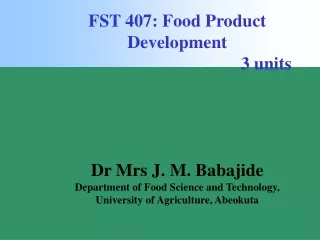
FST 407: Food Product Development 3 units
FST 407: Food Product Development 3 units Dr Mrs J. M. Babajide Department of Food Science and Technology, University of Agriculture, Abeokuta. Course requirements: CAT: 20% Course Project: 20% Exam: 60% 70% Class attendance compulsory.
553 views • 49 slides
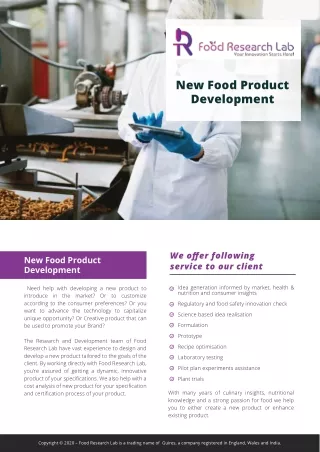
Food Product Development Services | FOODRESEARCHLAB
Need help with developing a new product to introduce in the market? Or to customize according to the consumer preferences? Or you want to advance the technology to capitalize unique opportunity? Or Creative product that can be used to promote your Brand? We offer following service to our client: u2022tIdea generation informed by market, health & u2022tnutrition and consumer insights u2022tRegulatory and food safety innovation check u2022tScience based idea realisation u2022tFormulation u2022tPrototype u2022tRecipe optimisation u2022tLaboratory testing u2022tPilot plan experiments assistance u2022tPlant trials To continue Reading: https://bit.ly/3kjHW0R ContactUs UK: 44- 74248 10299 [email protected] INDIA: 91 9566299022
71 views • 2 slides
- Decrease Font Size
- Increase Font Size

- Study At Adelaide
- Course Outlines
- FOOD SC 3021RG
- Log-in
FOOD SC 3021RG - Food Product Development III
Regency park - semester 2 - 2020, course details, course staff.
Course Coordinator: Shantell Cox
Course Timetable
The full timetable of all activities for this course can be accessed from Course Planner .
Course Learning Outcomes
University graduate attributes.
This course will provide students with an opportunity to develop the Graduate Attribute(s) specified below:
Recommended Resources
Learning & teaching modes.
The information below is provided as a guide to assist students in engaging appropriately with the course requirements.
Learning Activities Summary
Small group discovery experience, assessment summary, assessment related requirements, assessment detail, course grading.
Grades for your performance in this course will be awarded in accordance with the following scheme:
Further details of the grades/results can be obtained from Examinations .
Grade Descriptors are available which provide a general guide to the standard of work that is expected at each grade level. More information at Assessment for Coursework Programs .
Final results for this course will be made available through Access Adelaide .
The University places a high priority on approaches to learning and teaching that enhance the student experience. Feedback is sought from students in a variety of ways including on-going engagement with staff, the use of online discussion boards and the use of Student Experience of Learning and Teaching (SELT) surveys as well as GOS surveys and Program reviews.
SELTs are an important source of information to inform individual teaching practice, decisions about teaching duties, and course and program curriculum design. They enable the University to assess how effectively its learning environments and teaching practices facilitate student engagement and learning outcomes. Under the current SELT Policy (http://www.adelaide.edu.au/policies/101/) course SELTs are mandated and must be conducted at the conclusion of each term/semester/trimester for every course offering. Feedback on issues raised through course SELT surveys is made available to enrolled students through various resources (e.g. MyUni). In addition aggregated course SELT data is available.
- Academic Integrity for Students
- Academic Support with Maths
- Academic Support with writing and study skills
- Careers Services
- International Student Support
- Library Services for Students
- LinkedIn Learning
- Student Life Counselling Support - Personal counselling for issues affecting study
- Students with a Disability - Alternative academic arrangements
- YouX Student Care - Advocacy, confidential counselling, welfare support and advice
This section contains links to relevant assessment-related policies and guidelines - all university policies .
- Academic Credit Arrangements Policy
- Academic Integrity Policy
- Academic Progress by Coursework Students Policy
- Assessment for Coursework Programs Policy
- Copyright Compliance Policy
- Coursework Academic Programs Policy
- Elder Conservatorium of Music Noise Management Plan
- Intellectual Property Policy
- IT Acceptable Use and Security Policy
- Modified Arrangements for Coursework Assessment Policy
- Reasonable Adjustments to Learning, Teaching & Assessment for Students with a Disability Policy
- Student Experience of Learning and Teaching Policy
- Student Grievance Resolution Process
Students are reminded that in order to maintain the academic integrity of all programs and courses, the university has a zero-tolerance approach to students offering money or significant value goods or services to any staff member who is involved in their teaching or assessment. Students offering lecturers or tutors or professional staff anything more than a small token of appreciation is totally unacceptable, in any circumstances. Staff members are obliged to report all such incidents to their supervisor/manager, who will refer them for action under the university's student’s disciplinary procedures.
The University of Adelaide is committed to regular reviews of the courses and programs it offers to students. The University of Adelaide therefore reserves the right to discontinue or vary programs and courses without notice. Please read the important information contained in the disclaimer .

- Copyright & Disclaimer
- Privacy Statement
- Freedom of Information

Information For
- Future Students
- International Students
- New Students
- Current Students
- Current Staff
- Future Staff
- Industry & Government
Information About
- The University
- Study at Adelaide
- Degrees & Courses
- Work at Adelaide
- Research at Adelaide
- Indigenous Education
- Learning & Teaching
- Giving to Adelaide
People & Places
- Faculties & Divisions
- Campuses & Maps
- Staff Directory

The University of Adelaide Adelaide , South Australia 5005 Australia Australian University Provider Number PRV12105 CRICOS Provider Number 00123M
Telephone: +61 8 8313 4455
Coordinates: -34.920843 , 138.604513

COMMENTS
Product Development Key Stages. Ideation. Formulation. Processing. Commercialization. At each stage, or even within the stages, there are checkpoints to decide to continue or stop the project. This can be done through a Stage and Gate System like the example shown here or it can be done in a modified system. The principle is the same, though ...
Food product development. Sep 30, 2019 • Download as PPTX, PDF •. 10 likes • 7,389 views. U. Uxman ALi. You will see what is product and why can we develop the new product.you can also know why some products can fail. Rather than this you can find the product life cycle. New Product Development phases with complete explanation.
6. Production process development. 7. Food product Prototype development and testing. 8. Launch & Commercialization. Conclusion- Food Product Development. Food product development in food technology (processing) industries is a continuous and never stopping process.
THE STEPS IN. IDEATION GENERATION New product. SCREENING • This refers. QUESTIONS FOR SCREENING. FEASIBILITY • Feasibility considerations. TEST MARKETING • Should. COMMERCIALIZATION • Should the. FOOD PRODUCT DEVELOPMENT - Download as a PDF or view online for free.
1 Food Product DevelopmentH Lavercombe. 2 Learning OutcomesThe principal outcome to this unit is for the candidate to develop the necessary knowledge and understanding of how to research, design, develop and produce food products that meet with current market developments. 3 IntroductionDeveloping new food products for commercial or high street ...
knowledge for conversion of product concept to new product. Science. 1 of 13. Download now. Food product development - Download as a PDF or view online for free.
Blackwell Publishing Professional 2121 State Avenue, Ames, Iowa 50014, USA. Orders: Office: Fax: 1-800-862-6657 1-515-292-0140 1-515-292-3348 Web site: www.blackwellprofessional.com. Blackwell Publishing Ltd 9600 Garsington Road, Oxford OX4 2DQ, UK Tel.: +44 (0)1865 776868. Blackwell Publishing Asia 550 Swanston Street, Carlton, Victoria 3053 ...
Presentation on theme: "Food Product Development"— Presentation transcript: 1 Food Product Development. 2 New food products don't just happen — they must be carefully planned and then tested before they reach the consumer. 3 Design Brief. 4 Steps in the design ...
The pre-designed deck is ideal for food industry professionals to craft a customizable presentation in minutes in a hassle-free manner. You can provide a step-by-step guide on the food product development process. The feature-rich PPT is the best pick to help presenters exhibit the reasons for developing new food products.
Food Product Development Lesson Plan . Overview. Students will develop a food product, as well as prepare and present about various aspects of the product, its marketing, and logistics. ... Students will infuse creativity into their presentation by incorporating innovative ideas, visuals, and an engaging presentation style. This objective ...
Food Product Development Process. Explore the "Food Product Development Process", a comprehensive workflow covering concept ideation to final product delivery, market research, productions trials, quality control, and marketing. 1. Brainstorm product concept. Conduct market research.
In this unit students examine a range of food product developments, the reasons for food product development and their effect on society. Students investigate a range of emerging technologies in the food industry and outline the steps in food product development whilst designing their own food product. Additional resources to support the ...
PowerPoint presentation slides: This slide illustrates framework of product item development and promotion. It includes idea scoping, feasibility, development, testing, and product launch. Presenting our set of slides with Phases Of Food Product Development And Launch Process. This exhibits information on five stages of the process.
This page titled 1.1: Introduction to Food Product Development is shared under a CC BY-NC-SA 4.0 license and was authored, remixed, and/or curated by Kate Gilbert & Ken Prusa (Iowa State University Digital Press) via source content that was edited to the style and standards of the LibreTexts platform; a detailed edit history is available upon ...
This leads into the management of product development at three different levels: 1. Business strategy. 2. Product development programme. 3. Product development project. Finally specific aspects of food product development are identified as the basis of the book, and the structure of the book is outlined. 1.1 Food products - the basis of ...
Features of these PowerPoint presentation slides: This slide displays a Gantt chart for new product development and release. It also includes stages of production and launch such as business plan, food product niche selection, legal requirements, labelling requirements, etc. Introducing our premium set of slides with New Food Product Development And Launch Timeline.
The first phase of food development is usually the problem which needs to be resolved. For instance, developing a new lasagna for health-conscious customers. In this context, small-scale product development organizations come intopicture. The second phase of food development, the quality control, involves the process of ensuring the quality of ...
USAID Food Aid Product Improvement and Development. USAID Food Aid Product Improvement and Development. Presented By:. STEPHEN MOODY Senior Advisor for Food Technology, USAID/FFP. Ready-to-Use Foods. Emergency Food Products. General Food Basket Products. Fortified Blended Foods. Intended Purpose of Fortified Blended Foods. 316 views • 9 slides
Mc Fie H 2007 Consumer led food product development. CRC Press, Boca Raton, FL . Fuller, G. W. 2004 New food product development: from concept to marketplace CRC Press, Boca Raton, FL . Course Structure: Students will be divided into Product Development Teams consisting of ca. 4 students as determined by the Instructor. Teams 1 -6 will meet
Food Product Development by Miss Monohan on Prezi. Blog. April 18, 2024. Use Prezi Video for Zoom for more engaging meetings. April 16, 2024. Understanding 30-60-90 sales plans and incorporating them into a presentation. April 13, 2024.
Slideshow view. Download now. Food product development. FOOD PRODUCT DEVELOPMENT TOPIC TO. BY SUBIYA .S. SHAIKH SHEHNAZ.S. DOUBLE CHOCOLATE ALMOND BISCOTTI. INTRODUCTION • BISCOTTI ALSO. FUNCTIONAL FOODS. CINNAMON STUDY OBSERVE MANY.
Regency Park - Semester 2 - 2020. 2020. Product Development: Scale of new product development in market place, concept generation, consumer testing, quality function deployment. Research and Development process. Trends and new techniques in processing, for example extrusion, sous vide, high pressure, electrical and magnetic fields, light pulses ...
Food Product Development. Jun 8, 2014 • Download as PPT, PDF •. 12 likes • 8,776 views. Quoc Cuong Nguyen. Phát triển sản phẩm thực phẩm. Education Technology Business. 1 of 15. Download now. Food Product Development - Download as a PDF or view online for free.